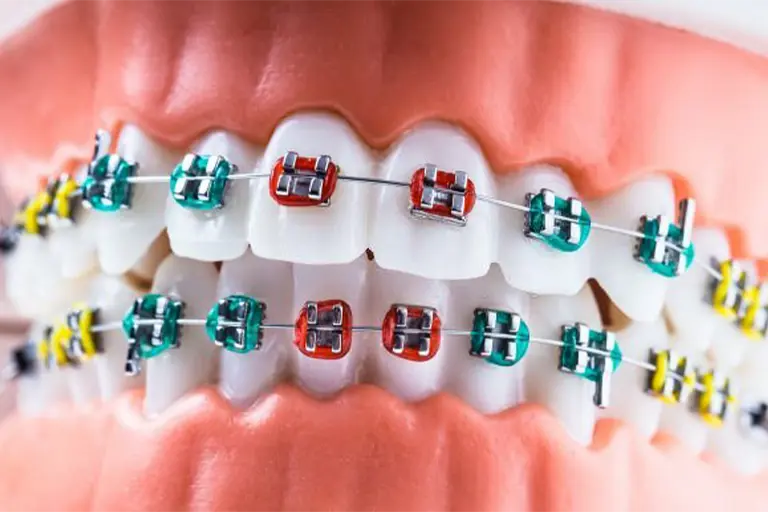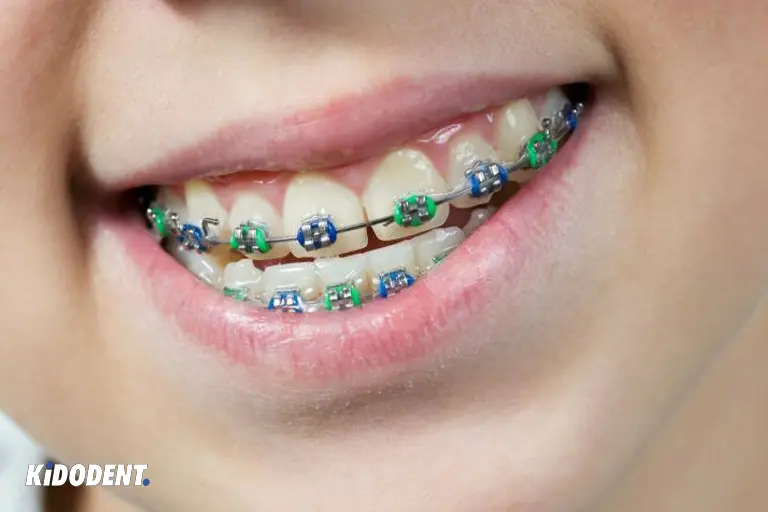What are Colored Braces?
Colored braces are a great way to help children and adults alike have more confidence in their smile. They come in many different colors, so you can find the one that makes you feel your best and show it off!
What is the difference between colored and non-colored braces?
The difference between braces is two-fold. Firstly, colored braces act as an aesthetic choice, while non-colored braces are intended to optimize the appearance and create a healthy smile with optimal function. Secondly, in most cases, the color of the sealant matches the brace paint (although there are exceptions).
Some would say that coloring is simply for fun and doesn’t serve any other purpose than making your teeth look pretty. Most would say that it also serves to mask what might otherwise be unattractive shades on your teeth or some consistency issues such as staining or discoloration.
Available Braces colors
There are a lot of color combinations to choose from with braces. Here is our favorite list:
- Aqua and yellow
- Neon green and pink
- Pink & purple
- Baby blue and navy
- Orange & blue
- Black & red
Why Colored Braces?
The color of metal braces can influence how they feel and their cosmetic effect.
Although color is not the most important factor to consider when choosing which kind of braces to use, health professionals recognize that from a psychological standpoint, it matters immensely.
Why? Some believe that different colors convey different sensations and ultimately affect self-perception. Others think that having an eye-catching smile contributes greatly to overall self-assurance and attractiveness.

How to Choose the Best Colored Braces?
Braces colors can be chosen in relation to preference, skin tone and teeth shade.
For instance, if the patient has a generally dark complexion with dark eyes and hair, then choosing pink braces would contrast the patient’s natural features and bring attention to his/her teeth (see image below). On the other hand, if he/she has light skin and hair color but a darker lip color or eyeshade; then white or clear brackets would be preferable as they will not draw attention away from the rest of the face
Different Types of Braces with Price
- Metal Braces
- A metal framework is used to support the arch wire, which applies a force to the teeth causing them to move. The brackets are made of high-grade stainless steel and titanium.
Metal Braces Price
Generally more costly than other types of braces; however, if on the system for a short time, the price can be comparable to other types of braces. - Ceramic Braces
- Made from porcelain that is baked into shape and bonded onto brackets. These are sometimes called clear braces. Ceramic braces can be an excellent choice for patients who have greater aesthetic demands and want to avoid a retainer.
Ceramic Braces Price
Sometimes considered more expensive than metal braces, but may actually cost less than some other types of braces if treatment is less than one year. - Lingual Braces
- These braces attach to the insides of teeth. They are most commonly used on the lower front teeth; however, some people also choose this type of brace for their upper teeth or for all of their teeth.
Lingual Braces Prices
May cost slightly less than other types of braces, and also may take less time to complete. - Invisalign Braces
- Invisalign braces are clear aligners that straighten teeth using the same techniques as traditional metal braces but without the visible wires or brackets.
Invisalign Braces price
Generally costs more than other types of braces; however, if on the system for a short time, the cost may be comparable to other types of braces. - Clear or Transparent Aligners
- These clear aligners are similar to the Invisalign system, except that they do not require a computerized process. The dentist takes an impression of the teeth and sends it to the lab, where a set of customized trays is created for each patient. Each tray is worn for about two weeks until the next tray is ready.
Clear or Transparent Aligners Price
Usually takes more time and cost than other types of braces because tooth preparation has to be precise in order for the aligners to work.
